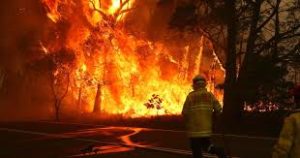 With Summer far from over, SCA (NSW) is urging small, medium, high-rise and other strata communities in NSW – especially those with flammable cladding – to implement fire safety practices as bushfires continue to threaten built up areas.
With Summer far from over, SCA (NSW) is urging small, medium, high-rise and other strata communities in NSW – especially those with flammable cladding – to implement fire safety practices as bushfires continue to threaten built up areas.
Months of dry heat and minimal rain has led SCA (NSW) to develop a tool for building managers and strata residents in built up areas. A unique checklist has been created for strata properties to be used in case of spot fires, ember attack or, in severe cases, where a fire front caused by nearby blazes is approaching.
Bushfires have the potential to impact any property. The threat to strata-titled properties wrapped in combustible cladding is even more grave without proper fire safety precautions.
Highly flammable aluminium composite cladding has been linked to the Lacrosse and Neo200 building fires in Melbourne, and the Grenfell Tower tragedy in London.
The new seven-point bushfire safety checklist aims to help strata communities stay safe this bushfire season. With hot and dry conditions expected to continue, it’s critical that managers and residents take action now to prevent loss of life and do all they can to protect their property.
SCA (NSW) bushfire safety checklist:
-
- Dispose of dry vegetation and litter: Embers can travel kilometres ahead of fire fronts, sparking spot fires or additional fire fronts. Dry vegetation and litter should be routinely cleared from rooftops, gutters, balconies and grounds. Grass should be maintained at lengths below 10cm and grass clippings disposed of.
- Keep evacuation points, such as stairwells and fire safety doors, clear and unobstructed: Managers and residents should also be familiar with evacuation points throughout the building. Evacuation instructions should be displayed on every floor. Illuminated exit signs must also be maintained to ensure they’re visible at all times.
- Develop a bushfire plan: All residents should have a bushfire plan in place in case of an emergency. A bushfire plan should detail when to leave, where to evacuate to and what you will need to take with you. Do not leave the decision to stay or leave to the last minute.
- Decide if you will stay or leave: This is one of the most crucial decisions to make in advance of an emergency. Building managers and residents should only make the decision to stay and defend the property if they are properly equipped and resourced to do so.
- Stay informed: Everyone should take responsibility for staying informed throughout bushfire season. The Bureau of Meteorology (BoM) website provides regularly updated Fire Danger Ratings. You can also receive alerts via radio, social media and SMS. Save the following number into your phone for Emergency Alert Australia: 0444 444 444.
- Check building safety: Residential buildings wrapped in combustible cladding are at increased risk during bushfire season. A professionally registered fire engineer will be able to assess the building and work with management to establish fire safety protocols.
- Ensure building insurance is adequate: If you haven’t already, check the building is insured for full replacement and reinstatement value and your personal contents sums insured are adequate. While not mandatory, retrofitting the property is recommended for older buildings to minimise damage and avoid costly repairs..
SCA (NSW) advises that anyone with questions regarding bushfire safety should consult their local fire authority


